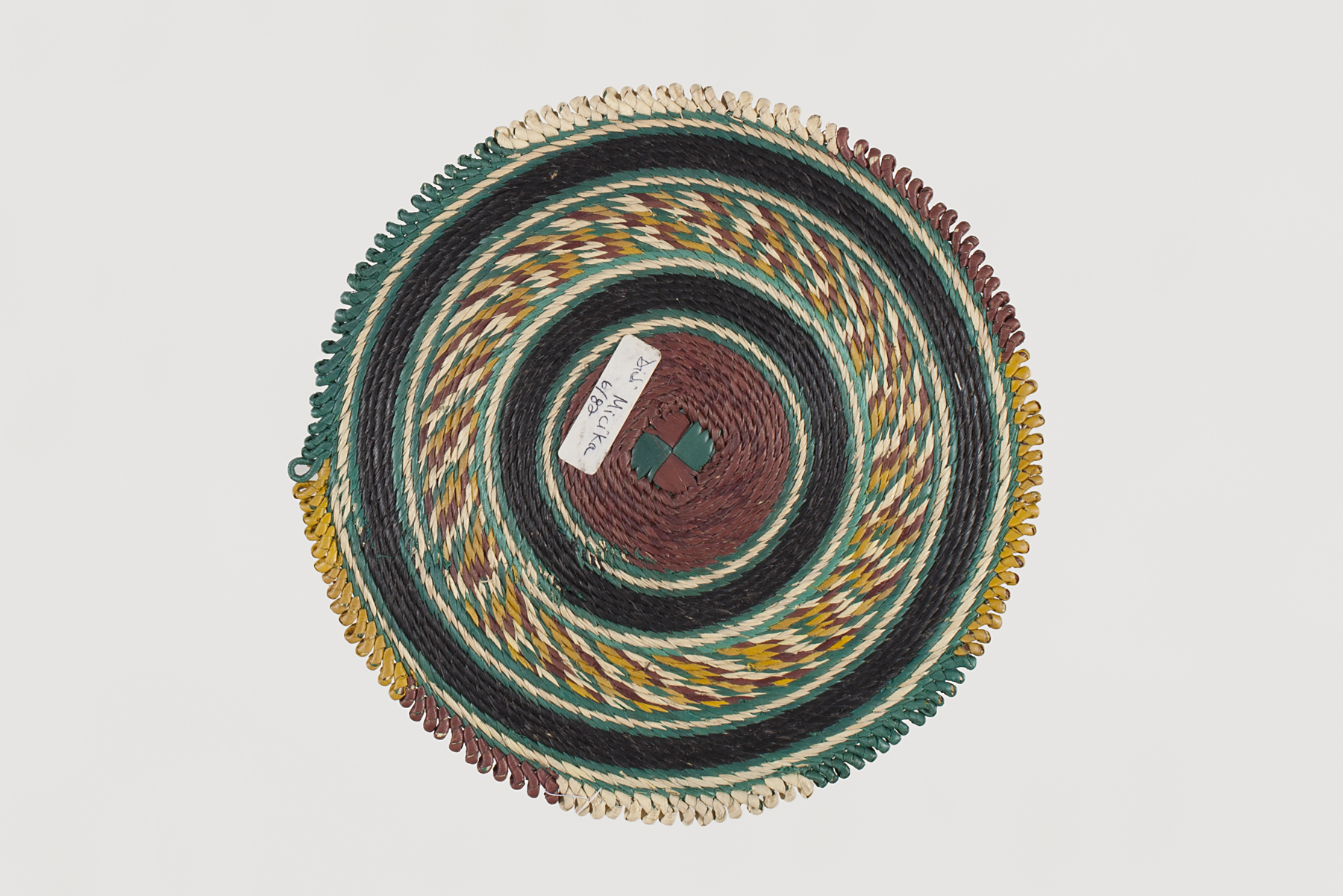woven food cover, unrecorded Hausa-Fulani artist
Artwork Overview
unrecorded Hausa-Fulani artist, artist
woven food cover,
1982
Where object was made: Michika, Nigeria
Material/technique: dyeing; coiling; plant fiber
Dimensions:
Object Height/Diameter (Height x Diameter): 2 x 16.5 cm
Object Height/Diameter (Height x Diameter): 0 13/16 x 6 1/2 in
Object Height/Diameter (Height x Diameter): 2 x 16.5 cm
Object Height/Diameter (Height x Diameter): 0 13/16 x 6 1/2 in
Credit line: Gift of Professor Beverly Mack
Accession number: 2011.0215
Not on display
If you wish to reproduce this image, please submit an image request


